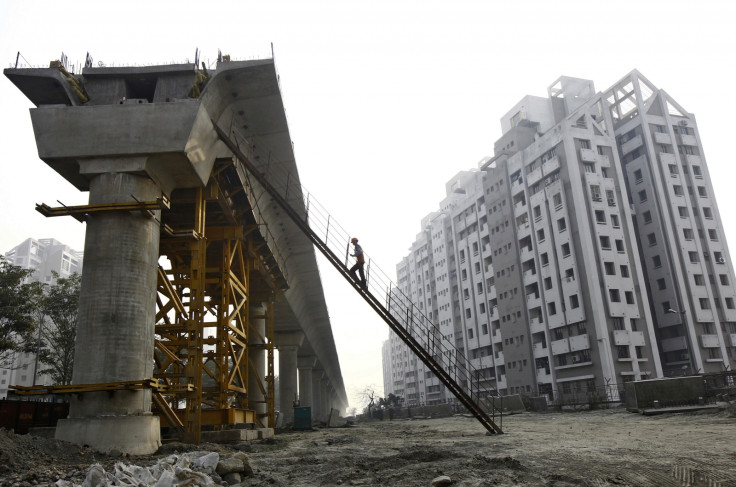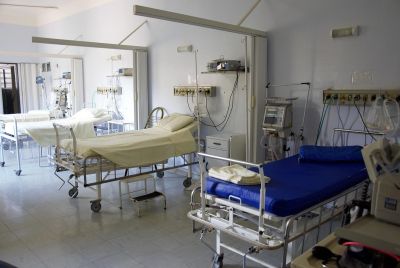India: Air quality index welcomed but lack of action on pollution continues

India launched the national Air Quality Index (AQI), a global standard that will give details of air quality in ten cities, in what is seen as a first step in acknowledging the country's pollution woes.
The data available with the Central Pollution Control Board will be compiled and displayed in public and uploaded on the internet.
The ten cities — Delhi, Agra, Kanpur, Lucknow, Varanasi, Faridabad, Ahmedabad, Chennai, Bengaluru and Hyderabad — will have monitoring stations with AQI display boards presenting the data on a colour coded scale with six levels.
From dark green indicating good air quality to a maroon conveying severe pollution, the index gives brief health implications like, minimal impact, causes breathing discomfort for sensitive people, respiratory illness from prolonged exposure, affects healthy people and severely impacts those with existing problems.
The public can then know whether to stay indoors or to refrain from strenuous activity outdoors. Beijing has a similar code which advises various sections of its residents from children to elders to workers on weekdays.
The index will provide current as well as daily average data on two kinds of particulate matter – PM2.5 or very fine particles smaller than 2.5 micrometres in diameter, and PM10 which are less than 10 micrometres in diameter – as well as pollutants like nitrogen dioxide, ozone and carbon monoxide.
Most of these accrue from industrial and vehicular sources.
The index will be extended to 46 other cities in a year or two.
Need of the hour
Environmentalists welcomed the move which will enhance public awareness and create a competitive environment among cities to take steps for air pollution mitigation.
But many were critical and sought accompanying health advisories while also asking the government to tackle pollution.
"It is the equivalent of using a thermometer to take the temperature of someone who has fever, to know how high the fever is. The thermometer does not provide the diagnosis of the cause for fever, not the medicine to bring it down. The air quality index by itself will not bring down pollution. For that other policy steps are needed," environmental activist Vandana Shiva told IBTimes UK.
"In fact, policies such as self regulation by polluters, the land acquisition policy , and more market and business friendly policies have the potential of increasing pollution risks. Transport is a case in point. Pollution from vehicles is 67% of Delhi's pollution There is no public transport policy announced after the WHO data on Delhi being the world capital of pollution."
There is no policy for regulating the number of automobiles which she says can be done through tax structures , parking fees structures. Parking rates in India are 80 times lower than London and Paris , and 8 times lower than in in cities like Cape Town and Beijing, she notes.
She calls for more commitment to shift from fossil fuels to renewables, from individual cars to shared mobility.
A University of Chicago study had recently estimated that 99.5% of India's 1.2 billion people are breathing in air polluted above safe levels determined by WHO, cutting 660 million lives short by about three years each.
An earlier World Health Organization study of 1,600 cities released last year showed Delhi had the world's highest annual average concentration of PM2.5 – higher even than Beijing.
These fine particles are associated with increased rates of chronic bronchitis, lung cancer and heart disease as they can penetrate deep into the lungs and enter the bloodstream.
India sets permissible levels for PM2.5 levels at 40 micrograms per cubic metre, twice the WHO's safe level. Even then, at around 175 the PM2.5 levels in Delhi on 6 April far exceeds the safe limit and even Beijing's reading which was 53.
Both measures were compiled by the US embassy.
Besides closing its last major coal power station next year in an attempt to tackle air pollution, Beijing is restricting vehicular movement and factory operation when orange and red alerts are issued.
Vehicles on the road
With vehicular exhaust identified as the biggest contributor, motorists will be limited to driving alternate days when the city announces a red alert under its four-tier warning system.
At present there are no such restrictions in India. In fact, to cater to increasing demand for power, the Power Ministry plans to double coal production to around one billion tonnes within five years.
The coal expansion plans through 2030 will at least double sulphur dioxide levels, along with those of nitrogen oxide and particulate matter, according to a study published by Urban Emissions and the Mumbai-based nonprofit group Conservation Action Trust.
A report from The Energy and Resources Institute, Delhi, University of California, San Diego and the California Air Resources Board had warned that under existing fuel emission standards, the vehicle population on Indian roads is set to increase air pollution up to five times over present levels.
From 140 million in 2011, vehicle population is expected to reach a staggering 400 million by 2030.
Construction waste, vehicular exhaust and industrial activities contribute most to the air pollution in India. Policymakers have been calling for restrictions on private vehicles, pollution taxes and strict enforcement of urban planning laws.
© Copyright IBTimes 2025. All rights reserved.





















